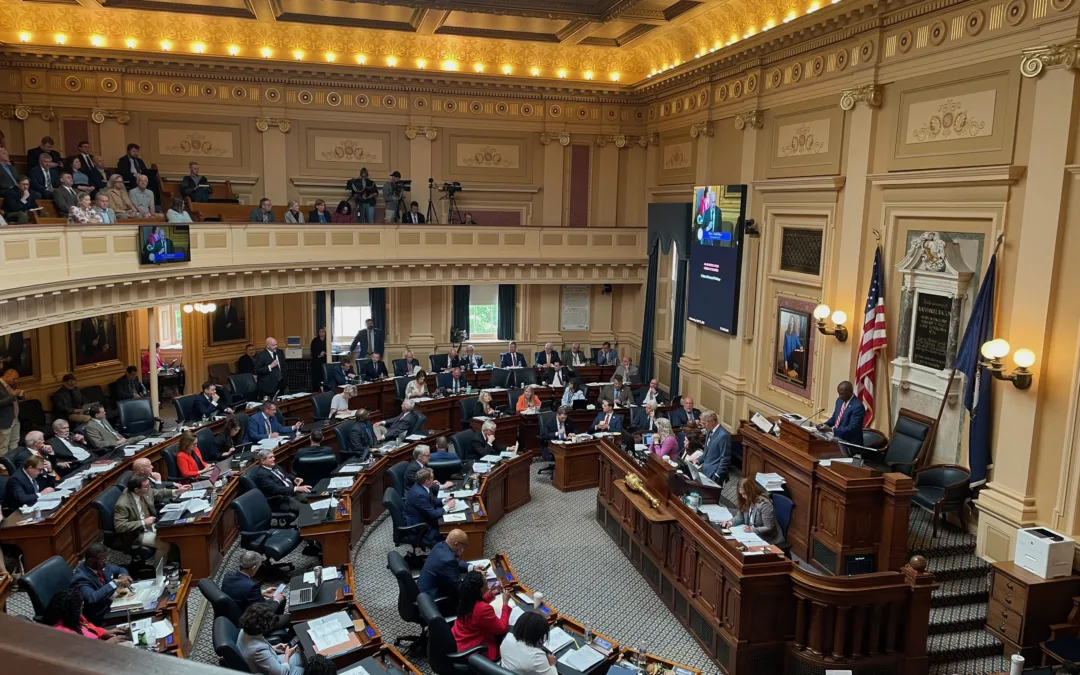
A former UVA graduate student and a UVA professor made a big step forward.
CHARLOTTESVILLE – The medical world recently came one step closer to preventing heart attacks and strokes, thanks to a lucky accident at UVA.
When New York University postdoctoral fellow Alexandra Newman, Ph. D, was a graduate student at University of Virginia’s School of Medicine, she beheld something no eyes before hers ever saw.
She studied a protective, fibrous cap in a mouse’s blood vessel. Bodies naturally produce the caps, which form over lesions that could rupture and trigger blood clots. That action causes heart attacks and strokes.
Newman set out to count each smooth muscle cell in the cap. Dr. Gary Owens, head of UVA’s Robert M. Berne Cardiovascular Research Center and a member of UVA’s Departments of Molecular Physiology and Biological Physics and Internal Medicine, explained the purpose of those cells.
“The cells that make up the walls of your blood vessel are called smooth muscle cells,” Owens said. “And their normal job is to contract and dilate, and they control the diameter of your blood vessels and where blood flow gets distributed in the body. So when you exercise, more blood goes to your muscles. When you’re resting, more goes to your other internal organs.”
During an injury to a blood vessel, the smooth muscle cells reprogram themselves and attempt to repair the damage.
UVA Team Makes a Discovery
Newman noticed something was off, while counting each cell in the cap.
The smooth muscle cells she intended to count weren’t the only ones that appeared in the cap. Odd, considering that according to medical textbooks and decades of accepted research, Newman should have encountered only that type of cell.
Convinced she’d made a mistake, the graduate student took her findings to Owens.
However, rather than finding any wrongdoing on Newman’s part, Owens confirmed what she saw.
“Well, first of all, we were very surprised,” Owens said.
When Newman discovered the lack of smooth muscle cells in the mouse, Owens predicted that the lesions would be very unstable. He anticipated that the mouse would have a heart attack or stroke. But it didn’t.
“The reason being, that these other cells had been activated to carry out the normal functions as smooth muscle cells,” Owens said. “So I’d have to say that the overwhelming initial feeling was we were completely surprised by the findings, but then excited to look at what the underlying mechanisms were. That really was where the breakthrough came.”
The Breakthrough
The mouse wasn’t a one-off. In every mouse Newman tested, she found the same conglomerative fiber cap composition.
“And importantly, we did a lot of human validation studies to show this is not just a function of the animal models that we study, but it’s also true in humans,” Owens said.
The gravity of Newman’s discovery quickly set in.
“As soon as I realized that I was doing everything correctly, and we had confirmed it in many models, it was pretty exciting,” Newman said.
And for good reason. The study supports recent findings that certain types of inflammation could help stabilize plaques. Doctors may one day be able to use these insights to strengthen the caps and prevent the lesions from rupturing.
Researching the Findings at UVA
Going off of Newman’s discovery, a team formed at UVA.
The research team included Newman, Serbulea, Baylis, Laura S. Shankman, Xenia Bradley, Gabriel F. Alencar, Katherine Owsiany, Rebecca A. Deaton, Santosh Karnewar, Sohel Shamsuzzaman, Anita Salamon, Mahima S. Reddy, Liang Guo, Aloke Finn, Renu Virmani, Olga A. Cherepanova and Owens.
They found that up to 40% of the fibrous cells in the cap in lab mice came from sources other than smooth muscle cells. In advanced human lesions, approximately 20% to 25% of the fibrous cap cells came from other sources.
The other sources include endothelial cells – cells that line blood vessels – and immune cells called macrophages, which are pro-inflammatory and plaque de-stabilizing, that have undergone special transitions that enable them to perform plaque-stabilizing functions.
“We do still show that the majority of the cells are smooth muscle derived. And what that means is that they started as a smooth muscle cell. And we can still tell that they’re a smooth muscle cell kind of inside, but they kind of look like something else outside,” Newman said. “So a lot of those cells, a lot of the cells that make up the fibrous cap, are still smooth muscle cells. But it’s not the vast majority. It’s not 90%. It’s more like 60%, 70%, which is still a lot. But that means that, you know, a really good percentage of these cells are from other sources, like endothelial or macrophages.”
The researchers also found that the formation of the fibrous cap depends on metabolic re-programming of the cells to perform processes that are essential to plaque stabilization.
JOIN THE CONVERSATION: Sign Up For Dogwood’s Newsletter
A Ticking Ticker
While there’s no way to plan a heart attack’s timing, there are factors that contribute to its probability.
“You have certain risk factors that will determine your probability for [a heart attack] occurring,” Owens said. “But it’s set off by these plaques that form on the inside of your blood vessels. The plaques themselves are pretty inert because your body forms a protective fibrous cap over top of that, to try to sort of wall them off, keep them isolated from the blood. When that cap fails, either by rupturing or an event called erosion, the underlying materials are very clot promoting and you get a large clot forming at the site of that ruptured lesion.”
While medications exist to help heart health, medical researchers are still on the lookout for emerging solutions.
“We’ve had drugs that lower cholesterol, including the statins, for a long period of time. They’re widely used. They’re very cheap. But they’ve only really modestly reduced the incidence of heart attacks and strokes,” Owens said. “And we’re not saying stop taking those. But rather take those, but we need something else to strengthen these fibrous caps. If we can actually figure out a way to do that, it would be a whole new therapy on top of statins to try to reduce the incidence of these strokes and heart attacks.”
A Promising Future
One day, the cap stabilization findings may help clinicians treat the underlying causes of heart attacks and strokes.
“Well obviously, the holy grail would be to prevent these plaques from becoming less stable,” Newman said. “… Basically what we would propose would be, like, the best outcome would be a way to specifically target those lesions that are becoming more unstable and kind of rearrange them a little bit so that they are a little bit more stable, so that we could prevent these events or these erosion events from happening in the first place.”
Owens and his team are well on the way toward making more discoveries.
“As part of the studies, we did some analysis of what genes are being upregulated, downregulated as the cells reprogram [them] to fibrous cap cells. So we’ve actually identified a number of candidate genes and pathways to try to target with drugs,” Owens said. “And so we’re currently extending the studies to actually see if we can make these cells make stronger, more robust fibrous paths by targeting some of these gene pathways that we’ve identified.”
Amie Knowles reports for Dogwood. You can reach her at [email protected]
Politics

Youngkin, Democrats to start over on budget talks
The Republican governor stood with Democratic leaders in the General Assembly on Wednesday in a bid to ease tensions over their budget debate....

VIDEO: Domestic abuse victims speak out against the gun law bills Gov. Glenn Youngkin vetoed
Senate Bill 47 and House Bill 46 aim to close the loophole that allows offenders to transfer their firearms to someone else instead of relinquishing...
Local News

Virginia verses: Celebrating 5 poetic icons for National Poetry Month
There’s no shortage of great writers when it comes to our commonwealth. From the haunting verses of Edgar Allan Poe, who found solace in Richmond's...

Join the fun: Recapping Family Literacy Night’s storybook adventures
When’s the last time you read a book aloud with a loved one? If it’s difficult to answer that question, then maybe it’s time to dust off that TBR...





